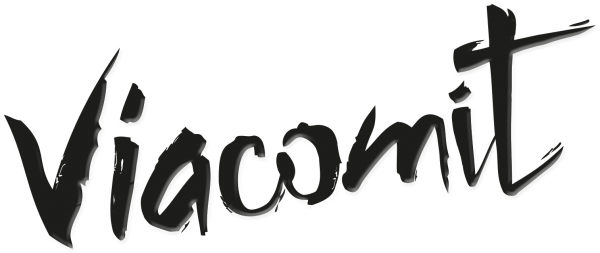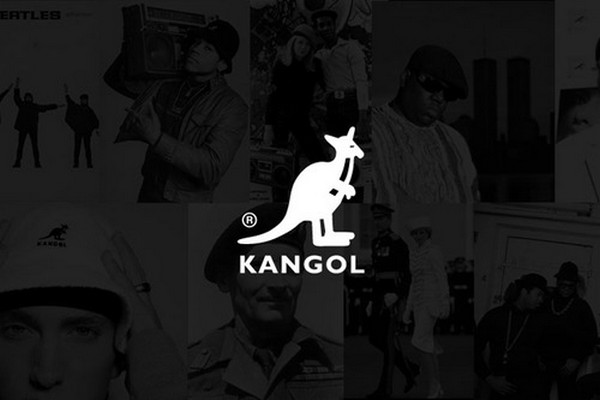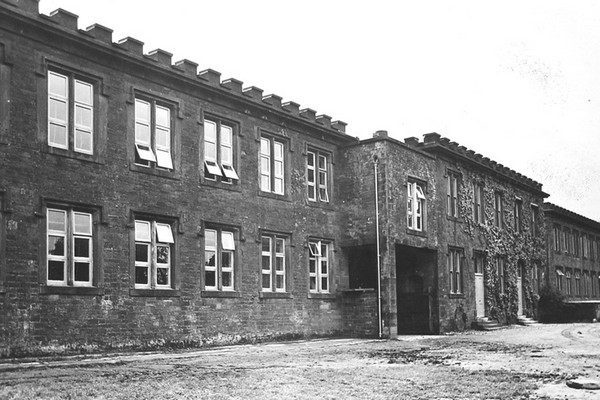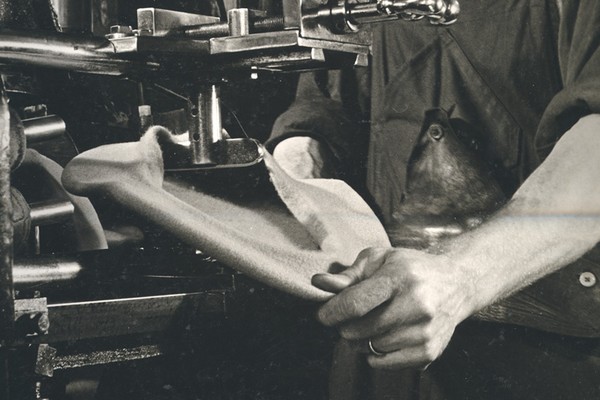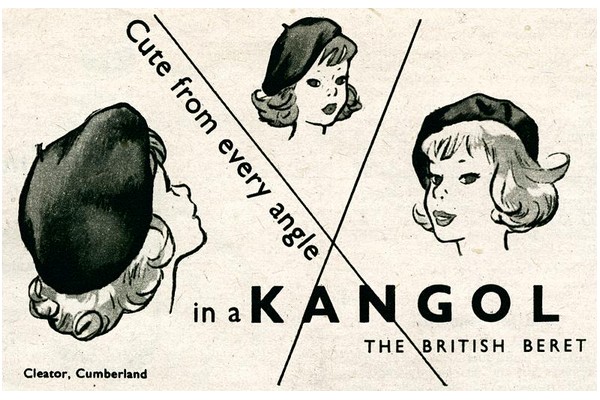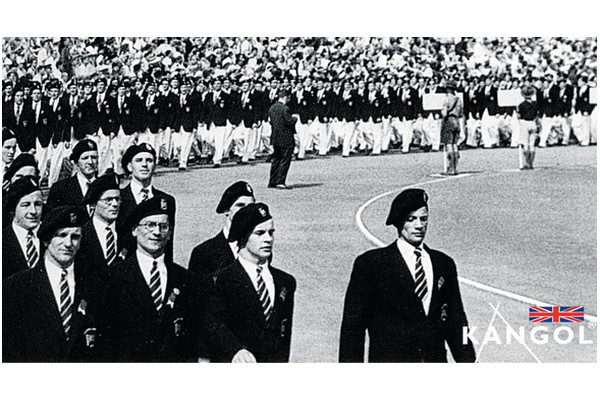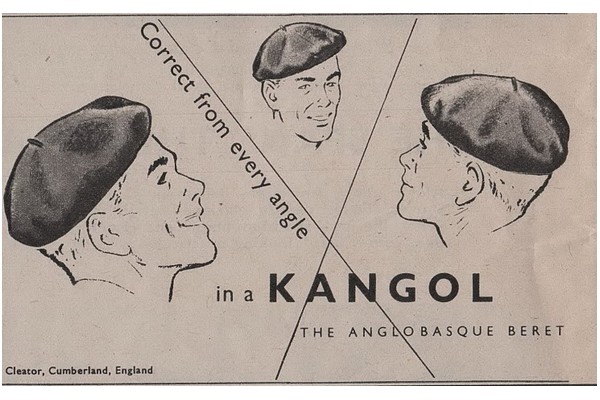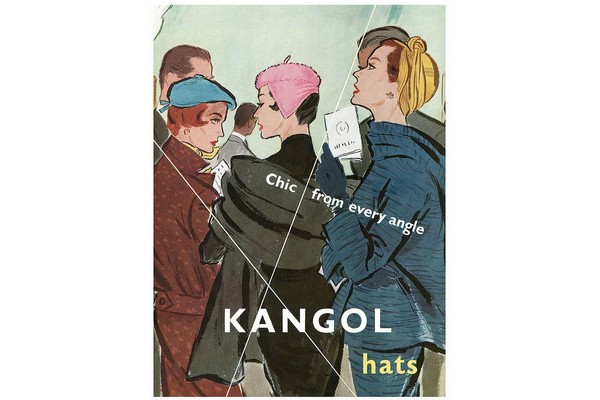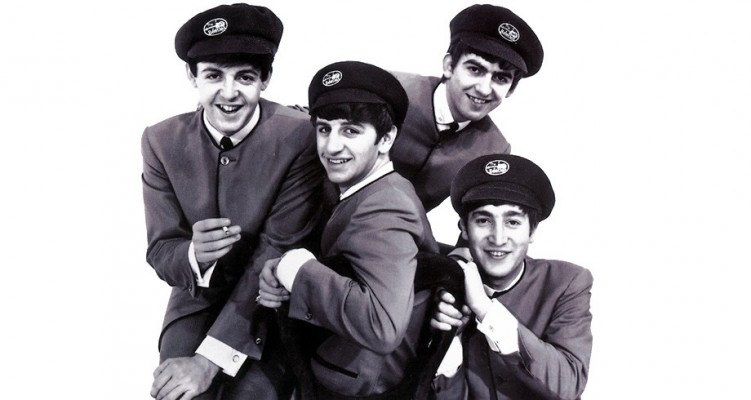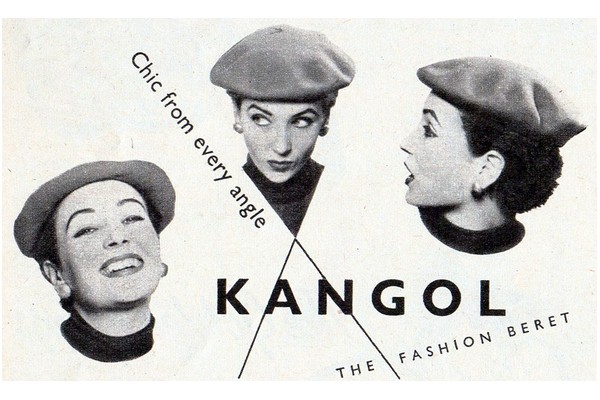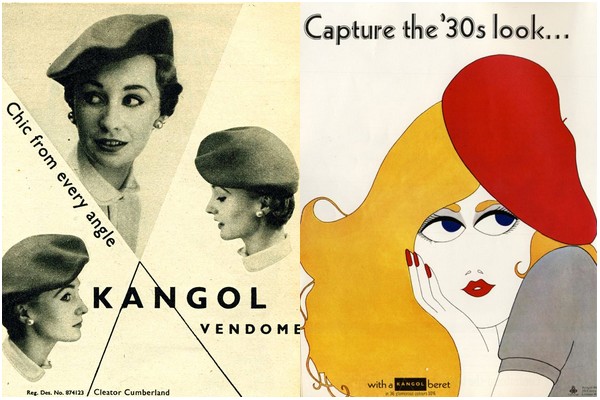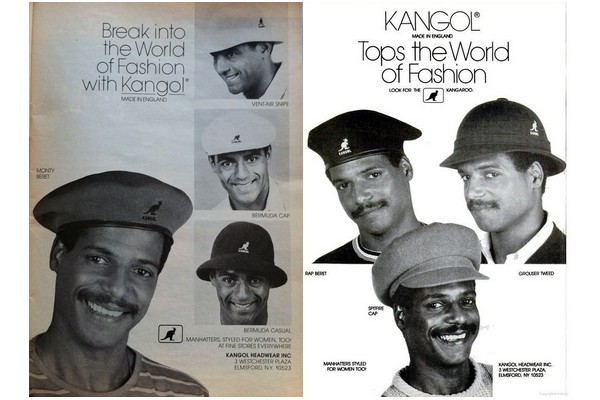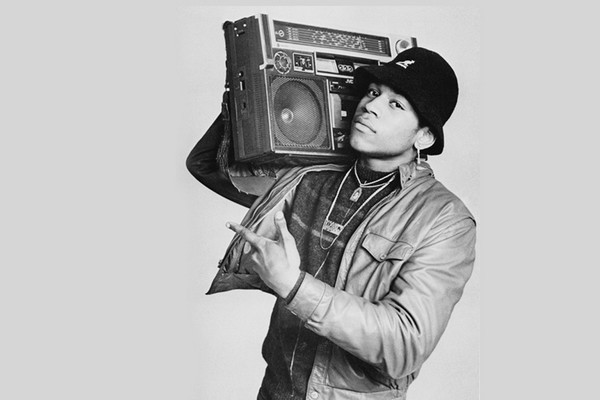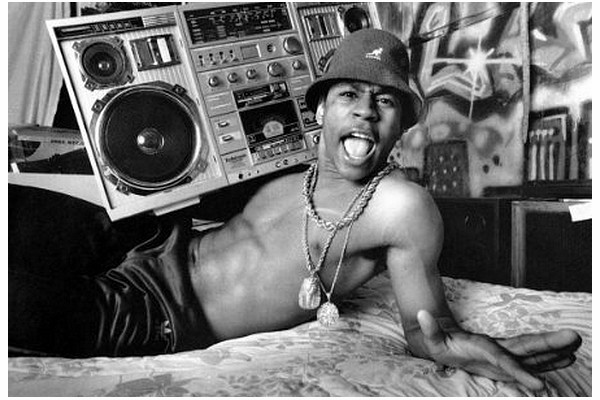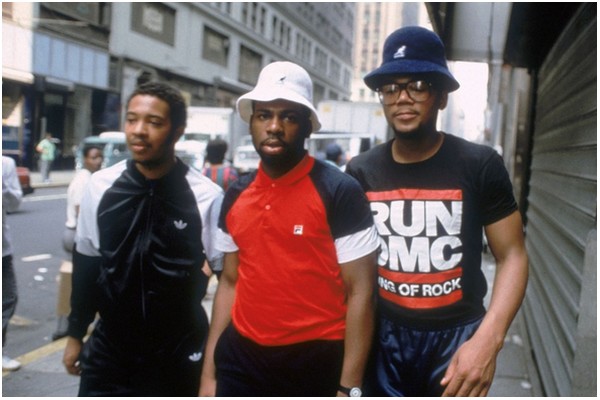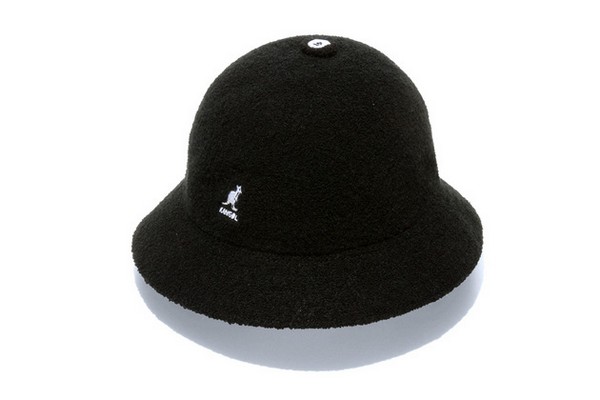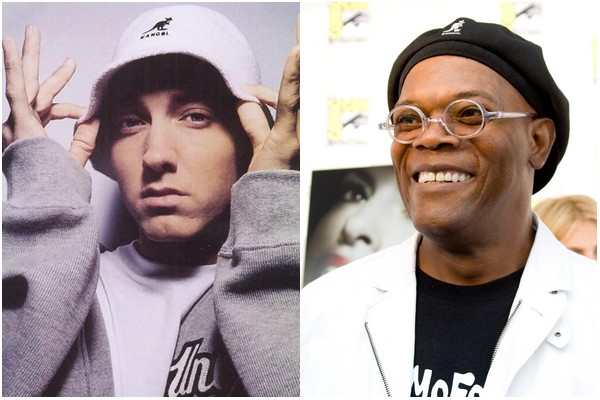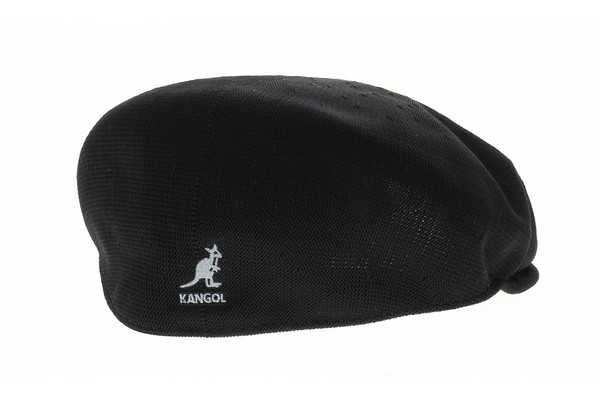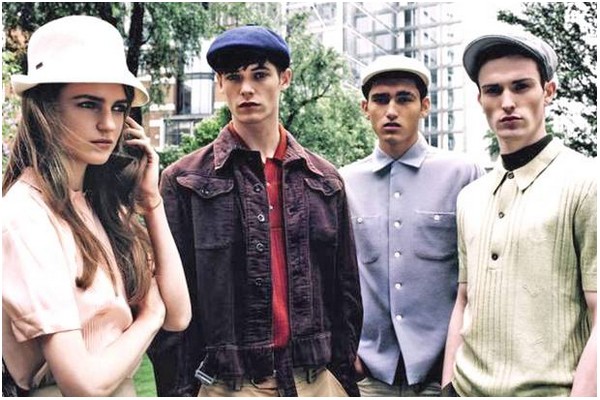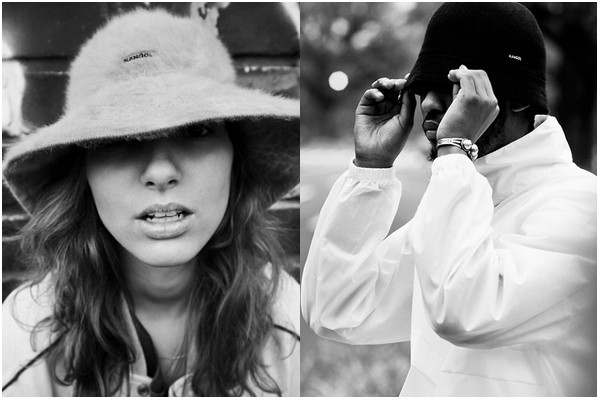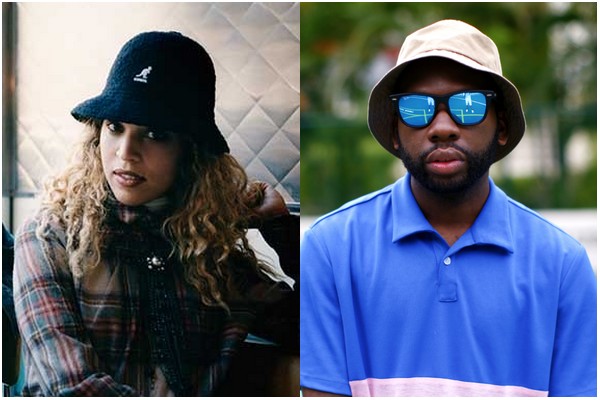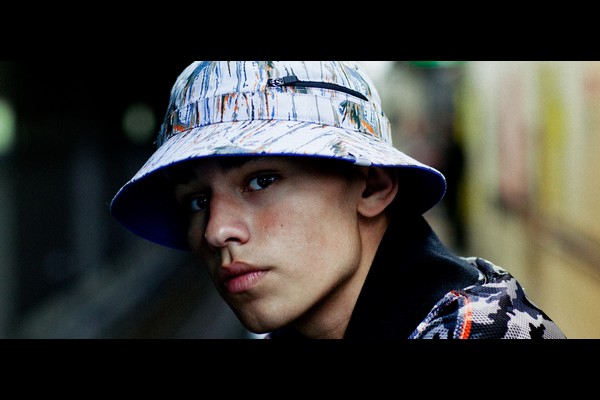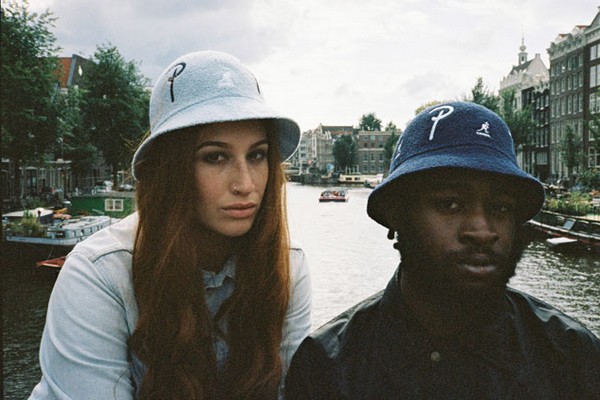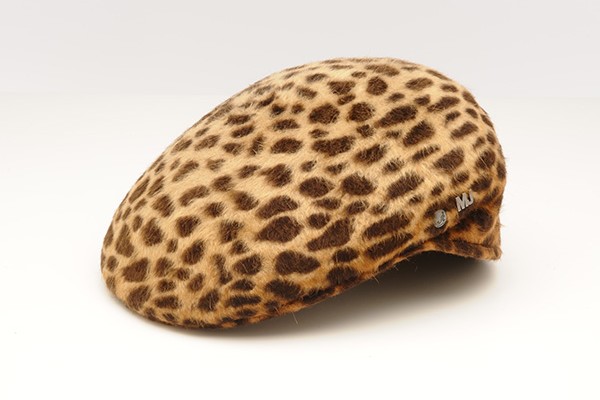Jacques Spreiregen returns to civilian life after WWI and enters into the headwear business in 1918 as an importer of Basque berets from France. A timeless classic, an incarnation of this beret has been in the Kangol line ever since. In 1938, Jacques creates the name KANGOL to distinguish himself from the competition. The most widely believed theory is that the founder combined the K from knitting, the ANG from angora, and the OL from wool. Whatever the true origins the name was an inspired invention. Officially born in Cleator, Cumbria in the U.K., Kangol gained notoriety as a brand for providing berets to the British army in WWII, most notably for General Bernard Montgomery. The anglo tradition continued in the post war years as Kangol outfitted the English Olympic Team with berets for the 1948 opening ceremonies. During and after the war, Kangol berets were the height of fashion. In the 1960s, designers Mary Quant and Pierre Cardin worked with the company, whose products graced the heads of the rich and famous, including the Beatles and Arnold Palmer, and later Princess Diana. In 1983 it was recognized that Kangol needed a mark to distinguish the world famous product. The Cleator factory in Britain had been experimenting with logos and sent out a whole batch for his review. These ranged from crocodiles to horses and turtles. Americans had been going into stores asking for the “kangaroo” hats. So instead of trying to fight it, Kangol adopted the Kangaroo into the logo. Synonymous with the fact that Kangol had an identifiable logo when sales reached a record high, was the fact that a famous young rapper named James Todd Smith, better know as LL Cool J, wore a Kangol Bermuda Casual on the cover of his sophomore album. He stayed rocking Kangol in his videos and public appearances throughout his overwhelmingly successful music career, making it an integral part of Hip-Hop history. In the years to come Kangol would cover the heads of such hip hop greats as Slick Rick, Erik B and Rakim, and Grand Master Flash. Another success in the USA came when the Vent-Air cap was introduced in the early 80s. It had remarkable appeal in America and went on to become Kangol’s biggest selling summer cap. Made in Britain and exported to the USA, it came about as part of Kangol’s product development programme. Kangol caps and hats became the essential headwear in the clubs and ‘on the streets’ tapping into a rising sub-culture of non-designer desirable labels. The company was astounded by the remarkable rise in popularity on the Kangol ’504.’ Almost overnight, the 504 became the ‘cool’ fashion accessory. Today Kangol produces a wide range of headwear, that crosses generations and cultures. It’s not just hip hop and it’s not just heritage. Kangol is not just a fashion brand. Kangol is a cultural fashion fusion, taking the very best of British heritage and retro hip hop and mixing it with future fashion. Kangol seeks to satisfy a new generation of consumers without discarding, abandoning or alienating the people who put it where it is today. This is demonstrated in the mutual respect that is exchanged between Kangol and the talented, influential individuals the brand collaborates with. In the past decade Kangol has worked with Antoni & Alison, ALIFE, Hiroshi Fujiwara, D*Face, Apishangel, Pure Evil, SSUR, Stereo Sound Agency, Commes Des Garçons, INSA, Evil Monito, Katherine Hamnet, Married to the MOB and Catherine Malandrino.
KangolBrand Story: Kangol
By viacomit, in Style. Monday May 18th, 2015
